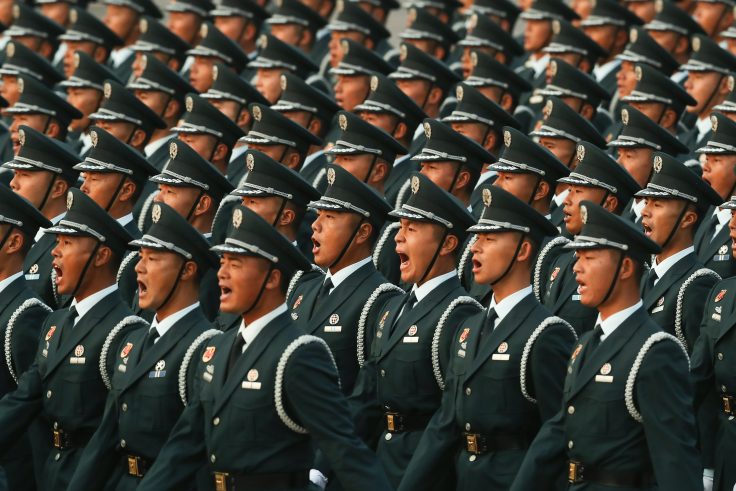Over the past half-decade or so, the foreign policy establishment in Washington has moved toward agreeing that the United States and China are locked in a great power rivalry. There is not much consensus beyond that point, however. The Republican Party has not yet decided whether to defend the fraying liberal international order or to jettison it for a more nationalistic approach, and the Democrats are wavering between prioritizing the rivalry with China or other concerns such as reducing greenhouse gas emissions.
In his new book The Twilight Struggle, Johns Hopkins professor Hal Brands provides clarity for these discussions by drawing lessons from the Cold War that can be applied to today’s competition with China. Unlike other recent books about the China challenge, such as Elbridge Colby’s The Strategy of Denial, The Twilight Struggle focuses less on where Washington ought to allocate resources for the next few years and more on how Americans should think about preparing for the next few decades, perhaps even centuries.
This perspective is necessary for winning a long-term competition, which Brands describes as an "ongoing, open-ended contest for influence between great powers." When managed well, these kinds of struggles do not tip into war, but they are never quite peaceful either. Rather, they are a series of interactions over a span of decades between adversaries who endeavor to amass enough partial victories to eventually force their opponent to collapse from exhaustion. Any individual success or failure is not likely to determine the ultimate outcome of the confrontation, which involves all aspects of national power and is "a test of systems as much as statecraft." Because Beijing seeks to ruthlessly exploit American weaknesses at home and abroad—and to prevail, Americans will have to respond in kind—"there are no purely domestic issues."
With that frame in mind, Brands describes 10 aspects of the Cold War and American strategy. Some of them, such as George Kennan’s Long Telegram that proposed the "containment" strategy, are well known to most students of American foreign policy. Others, including the American-Soviet collaboration for eradicating smallpox and the proxy wars in Africa, are more obscure but reveal important lessons for aspiring strategists.
The book is most disquieting for China hawks and reassuring for doves. Brands argues that because strategic competitions are an ongoing interaction with an intelligent adversary, each side can make many mistakes without losing the competition if they learn and correct their behavior: The series of poor American decisions that led to defeat in Vietnam, stagflation, and domestic turmoil, for example, did not doom the United States to defeat. Yet it is hard to imagine that the free world could have triumphed if the Truman administration had not secured the industrial heartland of Europe and Japan at the onset of the competition and consigned the communists to a war-ravaged Russia and a few undeveloped countries.
The competition with China will be different in many aspects than the Cold War, but if the early moves are as consequential as they were 75 years ago, then the intellectual confusion and ongoing failures of both the reigning elite and their populist challengers could soon doom the American people to a poorer and more dangerous future.
On the other hand, the costs of engaging in the competition may be lower than China doves fear. Civil libertarians are wary of foreign adventures because of the impact they have at home, but the United States repeatedly veered away from creating a "garrison state" or trampling civil liberties underfoot.
Many progressives worry that confronting China will undermine their campaign to reduce greenhouse gases, but the United States and the Soviet Union collaborated on global issues, such as smallpox eradication and nuclear weapon proliferation, even at the height of the Cold War. Presumably the Chinese communists will cooperate with Americans when they perceive it to be in their interest: If a country that relies heavily on glaciers for freshwater is unwilling to reduce its emissions, there is little chance that Washington can offer enough inducements to change that behavior.
Brands packs a great deal of information on a range of topics into The Twilight Struggle’s 250 pages, but the book moves along at a steady clip because of his straightforward, readable prose. Unlike some academics, he does not hide his point in a thicket of jargon, but he also avoids the popularizer’s trap of talking down to his audience.
Brands points out that the surest way to defeat an enemy is to know them well, to address your own weaknesses, and to use asymmetric advantages to weaken your rival at low cost. Although the United States made plenty of mistakes during the Cold War, enough Americans became proficient enough at these skills to force the Soviet Union to collapse. Will we do it again?
The Twilight Struggle: What the Cold War Teaches Us about Great-Power Rivalry Today
by Hal Brands
Yale University Press, 328 pp., $32.50
Mike Watson is the associate director of Hudson Institute’s Center for the Future of Liberal Society.
